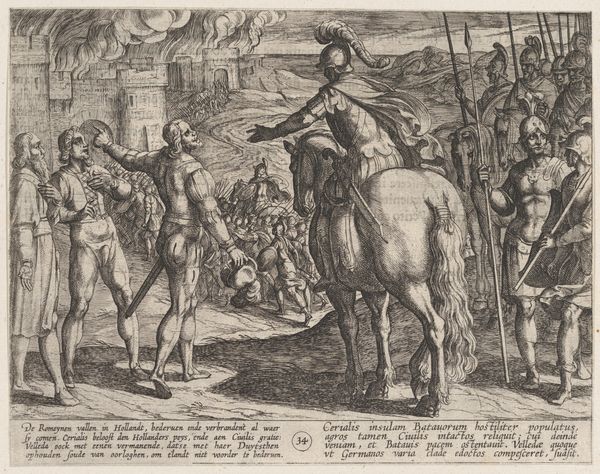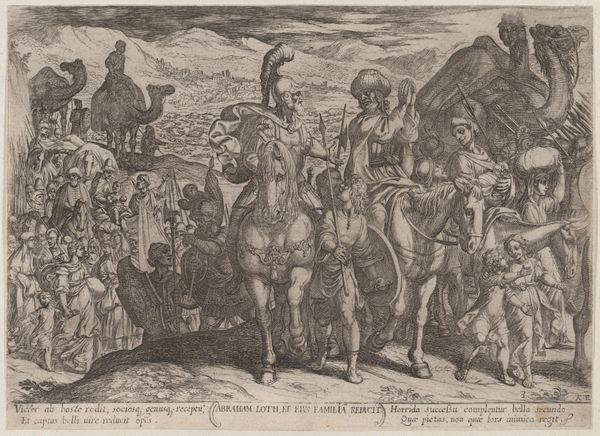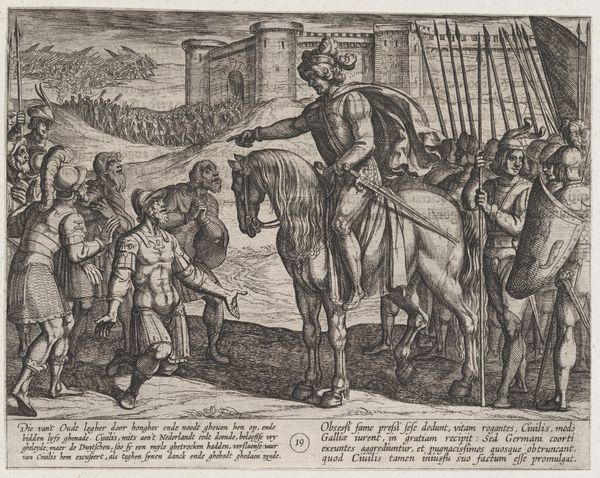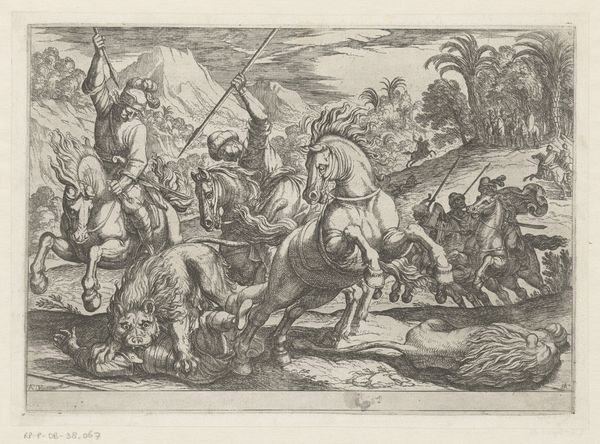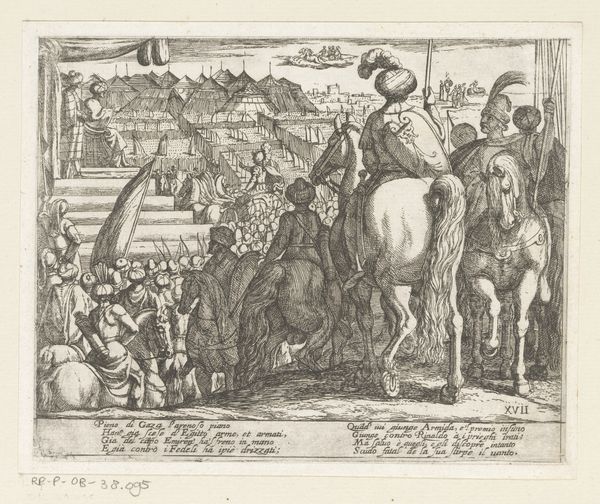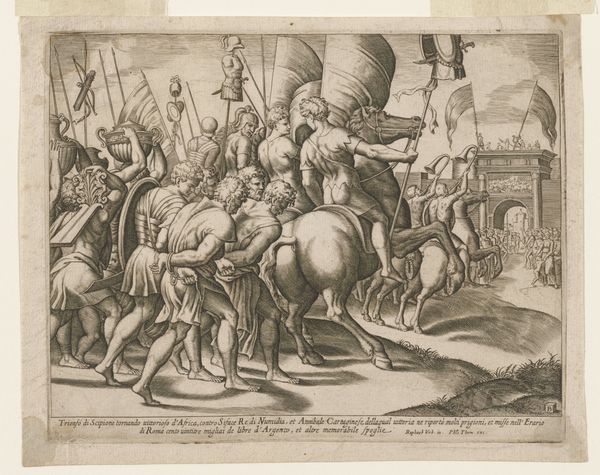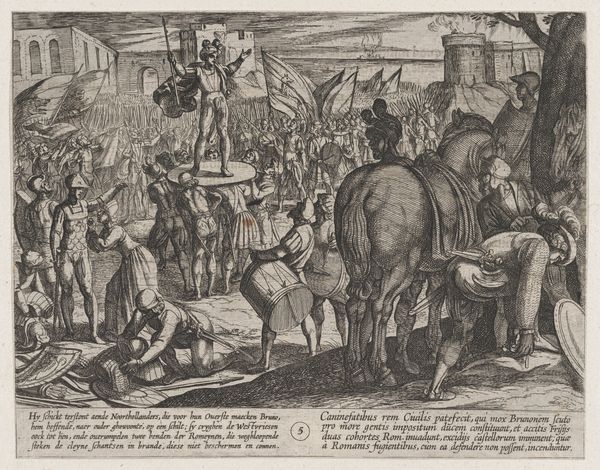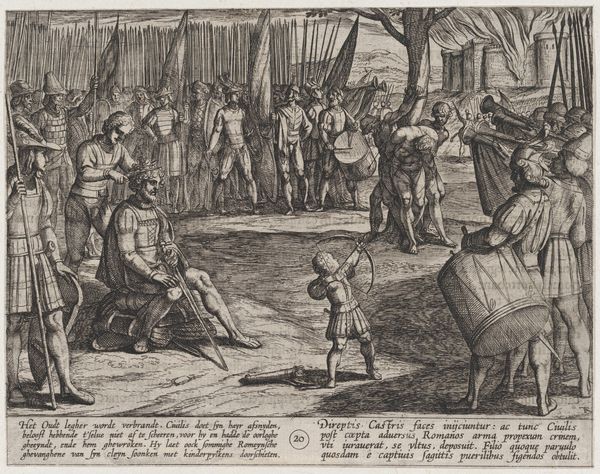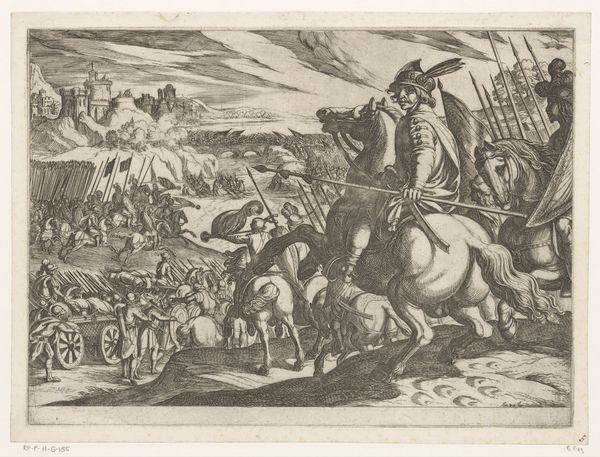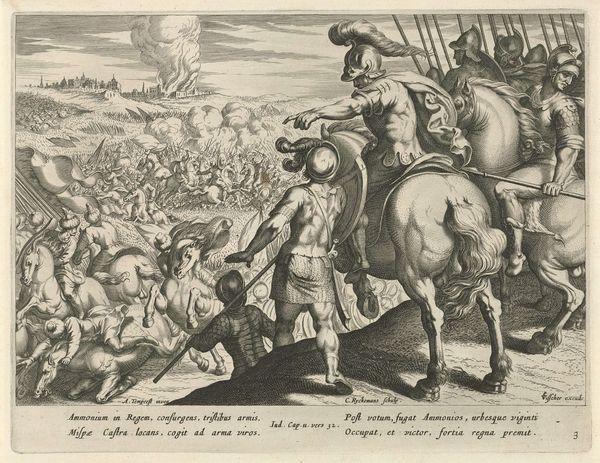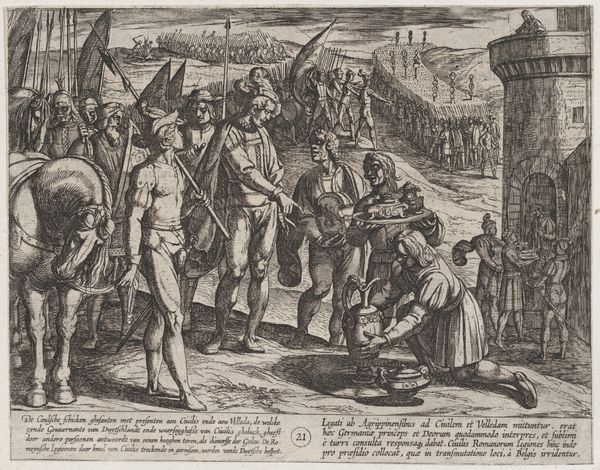
Plate 3: Alexander Instructing his Soldiers, from The Deeds of Alexander the Great 1608
0:00
0:00
drawing, print, engraving
#
drawing
#
ink drawing
#
narrative-art
#
baroque
# print
#
landscape
#
figuration
#
soldier
#
horse
#
history-painting
#
italian-renaissance
#
engraving
Dimensions: Sheet: 8 11/16 × 11 1/8 in. (22.1 × 28.3 cm)
Copyright: Public Domain
Antonio Tempesta created this print, "Plate 3: Alexander Instructing his Soldiers," in Italy, most likely at the end of the 16th century. It's part of a series illustrating the life of Alexander the Great, a popular subject during the Renaissance, when humanist scholars looked back to antiquity for models of virtue and leadership. But what does it mean to depict Alexander in this way? This image presents Alexander as a powerful, almost divine figure, leading his troops with decisive authority. The print's visual codes, like the eagle on the banner – a symbol of Roman imperial power – link Alexander to the grandeur of the Roman Empire, seeking to legitimize contemporary rulers through historical association. This print served a cultural function, reinforcing hierarchies and celebrating military might. As historians, we examine such images alongside texts and other cultural artifacts to understand how power was represented and negotiated in the early modern world. Art is always contingent on its social and institutional context, and our interpretation is enriched by understanding those forces.
Comments
No comments
Be the first to comment and join the conversation on the ultimate creative platform.
